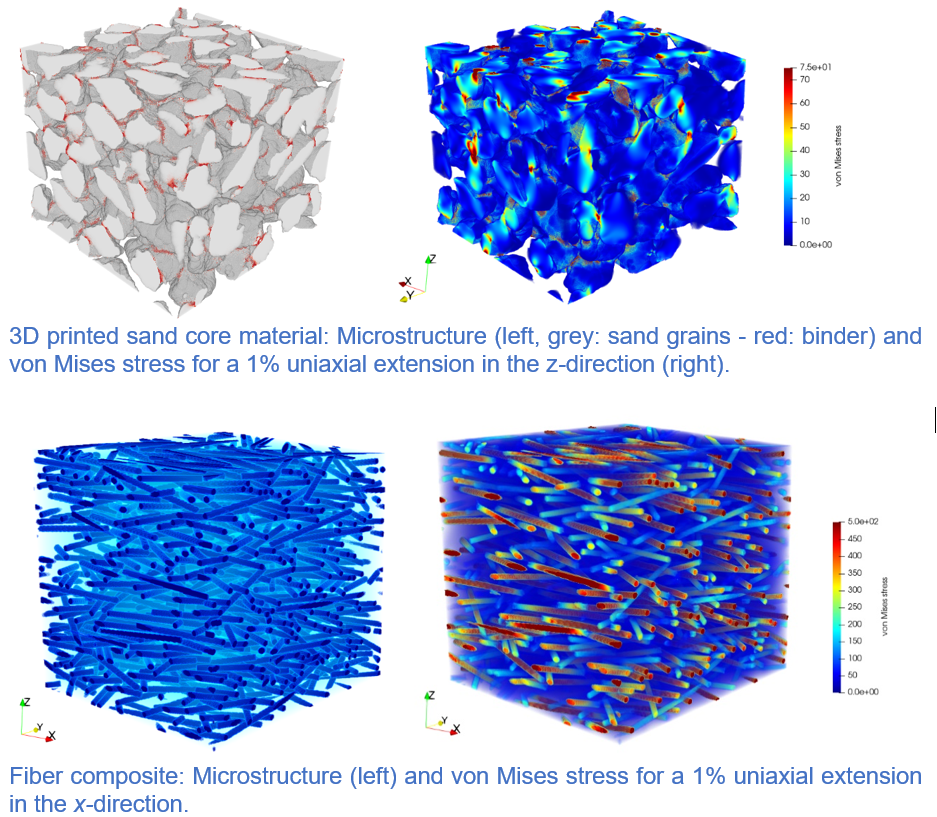Current Research Reports
Current Research Reports
Early Career Researchers give us an insight into their current research projects and present the work of individual specialisms or working groups. In this way, we publicise research and generate more visibility within the faculty and externally. The article is also published on the faculty's LinkedIn account.
If you would also like to present your research here, please send an e-mail to the research coordinator
Dr. Miriam Böhm (miriam.boehm@uni-due.de)
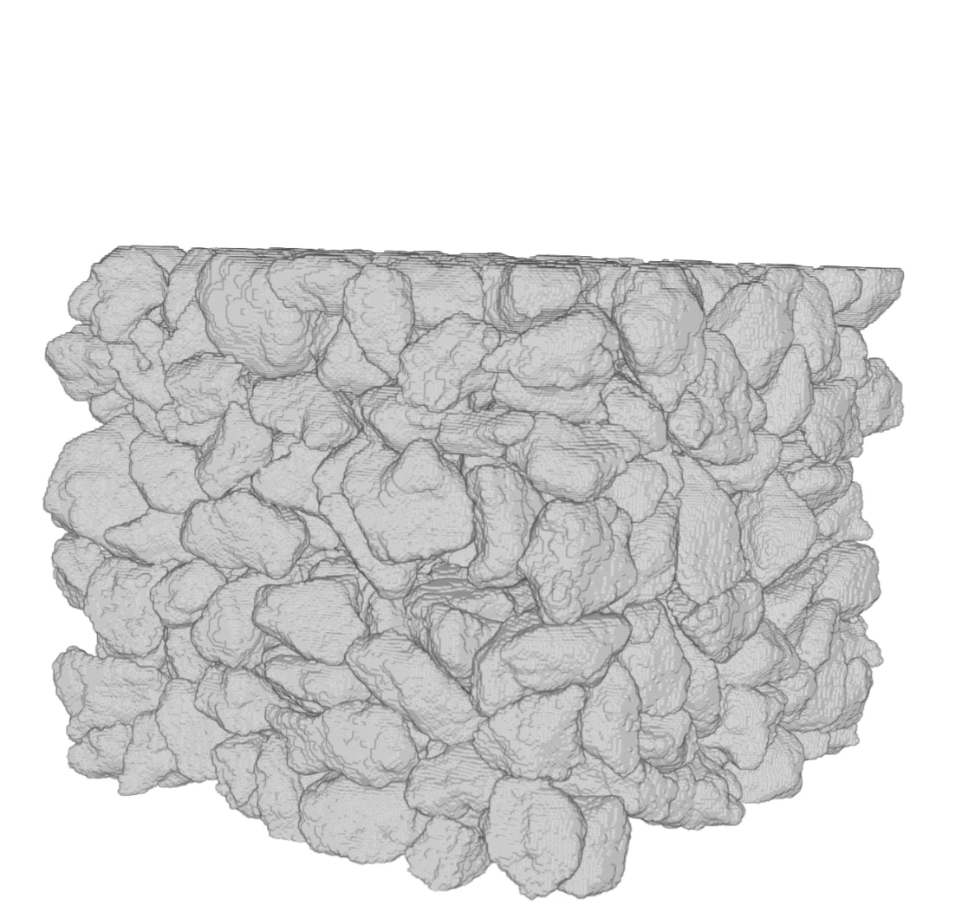
Engineering Mathematics – Dr. Elodie Donval

My current research project focuses on a better understanding of the mechanical properties of inorganic 3D printed sand cores for foundry applications. In this DFG-funded project, we are working closely with project partners to better understand the thermo-mechanical behaviour of the 3D printed material from an experimental and numerical point of view. My role in this project is to investigate the arrangement of sand and binder at the microscopic scale from a computational point of view.
Microstructure modelling
It is not always possible to collect CT scan data to understand the microscopic behaviour of composites. In such a case, computationally generated microstructures provide a convenient solution. In this project, we propose methods to model the arrangement of sand grains as they are deposited layer by layer in the 3D printing process and binder addition. This microstructure generation tool allows us to perform parametric studies and try to understand what the optimal printing parameters are.
Computing material properties
Once the microstructure is generated, we aim to evaluate the macroscopic behaviour of the printed material through computational FFT-based homogenization. The goal is to better understand the material and assess whether it has the required properties, particularly in terms of permeability and strength, to be used for casting. In this case, this is particularly challenging as we are looking at porous microstructures. We are therefore also developing efficient homogenization solvers.
About the working group:
Microstructure generation and computational homogenization are among the main topics of interest at the institute. On the microstructure generation side, we mainly work on industrial microstructures, composed of fibers for instance. Regarding computational, FFT-based homogenization, some of the questions we are addressing include: How can we improve the accuracy and computational time? Is it a good idea to perform the computation directly on the CT scan data, and if so, how? What can we do to better describe the failure at the microscopic level and what does it mean at the macroscopic level? By understanding composite materials at the microscopic scale, we hope to provide clues for to model them at the macroscopic scale. If you are interested in these questions too, the institute provides Master-level courses on these topics. We also offer Bachelor and Master thesis, feel free to reach out!
Q&A
What is your favourite experiment/research in general?
What I really like about my research is to understand how tiny changes in the microstructure can affect the global behavior of a whole element (a mold for my current project). By understanding that, it paves the way to optimizing the microstructure.
What do you enjoy most about your research in general at the faculty of engineering/or the UDE?
I am working in a great team at the Institute, and I think that’s the most important! However, one thing which is very specific to UDE and that I really enjoy as a postdoc is all the training opportunities about research-related skills and career development that are offered by the Graduate Research Center and the Research Academy Ruhr.
Is there something you are looking for? Like an expert for a specific method, critical feedback or a collaboration partner?
We would be very happy to find experimental collaboration partners interested in computational modelling of composite materials!
Contact

Metallurgy of Iron- and Steel-Production – Philipp Winstermann

Hydrogen plays a central role in the path to decarbonization. As a fuel or process gas, hydrogen releases no carbon-containing or other harmful emissions when used. The different temporal and geographical availability of renewable energies for producing green hydrogen highlights the necessity of storage and transportation options. This challenge is addressed by the Me2H2 project. The iron-steam process is to be established as an alternative to liquefaction, conversion to ammonia, or binding in hydrocarbons. The energy of the hydrogen can be stored by reducing suitable metal oxides based on iron. At the time and place of demand the energy stored in the iron material can be released again in the form of hydrogen through the iron-steam process. In this process, the material is oxidized with the help of steam, which reacts to form hydrogen. This process was already used industrially to produce hydrogen at the beginning of the 20th century and is thus proven on a large scale. Advantages include the avoidance of the "boil-off effect" of liquefied hydrogen and the toxicological safety compared to ammonia or liquid hydrocarbon carriers. Together with partners at the TU Clausthal, the Leibniz Institute for Materials-Oriented Technologies, thyssenkrupp SE, and the SMS Group, we are identifying suitable material systems, dealing with fundamental questions and developing the associated process and plant technology. Many thanks also to Rahmatika Islamia and Kesytlanang Tristanav W, two bachelor candidates that are currently working with Philipp under the double degree program!
About the working group:
The research area of metallurgy is primarily concerned with thermodynamic and kinetic investigations of liquid metal phases, metal/slag reactions, issues relating to the solidification of metals and the recycling of oxide and metallic residues (filter dusts, slags). To this end, research and teaching focuses on the characteristic properties of a wide range of metallic materials, including steel and cast iron as well as light and non-ferrous metals.
Q&A
What is your favourite experiment/research in general?
The experiment that works of course!
What do you enjoy most about your research in general at the faculty of engineering/or the UDE?
That our motto “open-minded” is lived out. New ideas are appreciated as there is a lot of room to gain experiences and test different scientific approaches.
Is there something you are looking for? Like an expert for a specific method, critical feedback or a collaboration partner?
I am open to network, especially in the field of hydrogen storage and transport.
Contact
Mechanical and process engineering
Institute for Technologies of Metals (ITM)

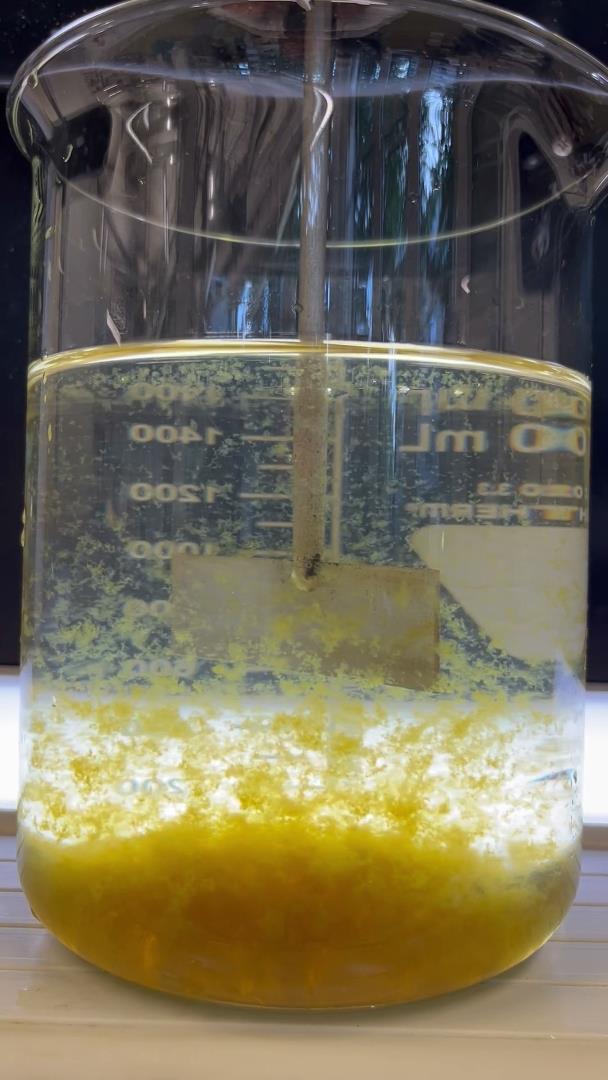
Process Engineering / Water Technology – Marko Schiele

Water appears in various forms, such as groundwater from the soil, surface water from rivers and lakes, or spring water. In most cases, direct consumption is not entirely safe due to pollutants or microbial health risks. Coagulation and flocculation are water treatment processes that destabilize and agglomerate suspended particles to form larger, settleable flocs that can be removed by sedimentation or filtration. Being one of the first steps in the treatment chain, especially for surface waters, the coagulation process is nowadays almost exclusively relying on metal-based coagulants such as iron or aluminum, often in combination with synthetic organic polymers. The project ‘”Nature Floc” is aiming at a more eco-friendly coagulation process. We characterize, compare and test coagulants on base of natural raw materials such as starch or chitosan (a polymer derived from the shells of shrimps). Algae-based substances also show potential. The comparison of flocculants through flocculation tests is the exciting part of the project. Practical lab experiments are always fascinating, and in flocculation tests, they are also highly visual, making it immediately clear whether changes in parameters had a positive or negative effect. The overarching goal of the project is to obtain legal approval for natural flocculants in water treatment in Germany. Through our research work, we can truly make a difference!
About the working group:
In order to address the national and international challenges in the field of water supply, the Chair of MVT/WT with the key competences of membrane filtration and adsorption focuses on the three research areas of
Development of contaminated water resources
Process optimisation and simulation
Circular economy
is being worked on. Specific topics in current projects include the advanced treatment of wastewater treatment plant effluents, the reuse of hypersaline wastewater and the utilisation of heavily polluted water resources (e.g. oily wastewater or eutrophic water or water containing high levels of algae). The focus of process optimisation and simulation is on integrated membrane systems and hybrid membrane processes with both ceramic and polymer membranes. In the research field of recycling management, environmentally friendly and regenerative materials and operating materials for water treatment are researched, including the avoidance or utilisation of residual and waste materials.
Q&A
What is your favorite experiment/part of your daily work?
My favorite part of the day is conducting my lab experiments. My favorite experiment is the flocculation test or „Jar-Test“, where the flocculant is added to the contaminated water under continuous stirring to start the flocculation process. I like that this experiment gives direct insights into how well the flocculation works based on the set parameters.
What do you enjoy most about your research in general at the Faculty of Engineering or the University of Duisburg-Essen (UDE)?
First of all, I appreciate that the faculty’s research addresses real future challenges and thus has a positive impact on water treatment. I also enjoy having the freedom to explore my own project while receiving extensive support in improving myself and growing through the Project.
Is there something you are looking for? Like an expert for a specific method, critical feedback or a collaboration partner?
The project is still in its early stages, and we have reliable partners by our side who support us with their specialized expertise.
Contact
Mechanical and Process Engineering

Additive Production Technology – Marius Meyer

Stent grafts are used to repair aortic aneurysms, i.e. enlargements of the aorta. This is a stabilising vascular prosthesis, which usually consists of a plastic mesh into which a metal wire mesh is sewn. While the tissue, i.e. the graft, is intended to take over the function of the vessel, the metal stent structure ensures mechanical stability and fixation in the aorta. The implantation of such stent grafts is carried out using X-rays via the femoral arteries. This procedure is associated with a corresponding radiation exposure, both for medical staff and the people being treated. The BMBF-funded joint project MEVAR aims to produce stent grafts from a polymer that is visible in MRI in order to minimise the radiation exposure and to automate the currently very costly and largely manual production process using plastic 3D printing. To this end, the Chair of Production Engineering is developing a high-temperature material extrusion system that can be used to print tubular components from biocompatible high-performance polymers specially developed for this process. In this system, the stent structure is printed directly onto the graft using a rotary printing bed, meaning that manual reworking is no longer necessary.
About the working group:
The many years of activities in the field of rapid technologies have always focussed on current problems on the path to rapid manufacturing, such as the qualification of new materials, in-depth process understanding, RM-compatible design or the development of medical instruments. All research activities in the field of tool-free manufacturing are bundled at the chair in the Rapid Technology Centre (RTC). In the field of assembly technology, the main focus is on integrating hybrid systems to make processes more flexible, optimising manual work processes in terms of ergonomics and design, and simulations in assembly. The ‘HYBRID PROCESS’ laboratory for assembly and simulation exists at the Chair of Production Engineering to bring together research projects in the field of assembly technology.
Q&A
What is your favourite experiment/research in general?
DSC (Differential Scanning Calorimetry, dt. Dynamische Differenzkalorimetrie), weil sie Auskunft darüber gibt, welches thermische Verarbeitungsfenster ein Material hat, die Vorbereitung der Proben ein wenig Fingerspitzengefühl erfordert und die Messungen größtenteils von allein ablaufen.
What do you enjoy most about your research in general at the faculty of engineering/or the UDE?
Die Möglichkeit zur Mitgestaltung des eigenen wissenschaftlichen Werdegangs über die Akquise von Folgeprojekten, sodass man nicht nur innerhalb seines ursprünglichen Fachgebiets bleiben muss, sondern die Arbeit auch selbstständig in eine gewünschte Richtung lenken kann.
Is there something you are looking for? Like an expert for a specific method, critical feedback or a collaboration partner?
Aktuell suche ich hauptsächlich nach möglichen Kooperationen für Folgeprojekte zur Weiterentwicklung und Untersuchung des (Kunststoff)-3D-Drucks. Die für mich interessantesten Bereiche sind hier Materialextrusion auf Textilien, gedruckte Verbundsysteme (insb. für orthopädische/medizinische Anwendung) und Kunststoff-/Werkstofftechnik.
Contact
Mechanical and Process Engineering
Institute of Product Engineering
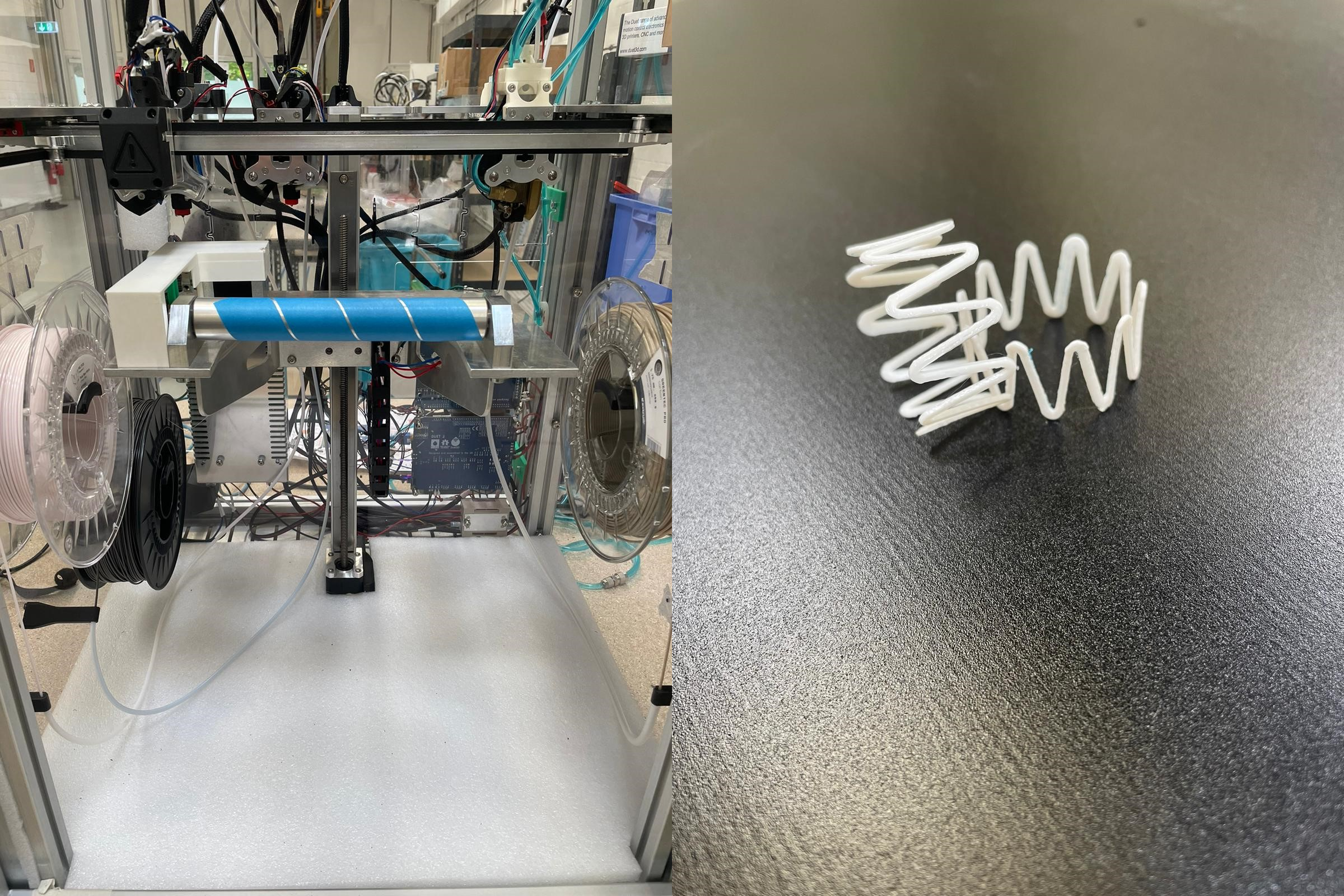
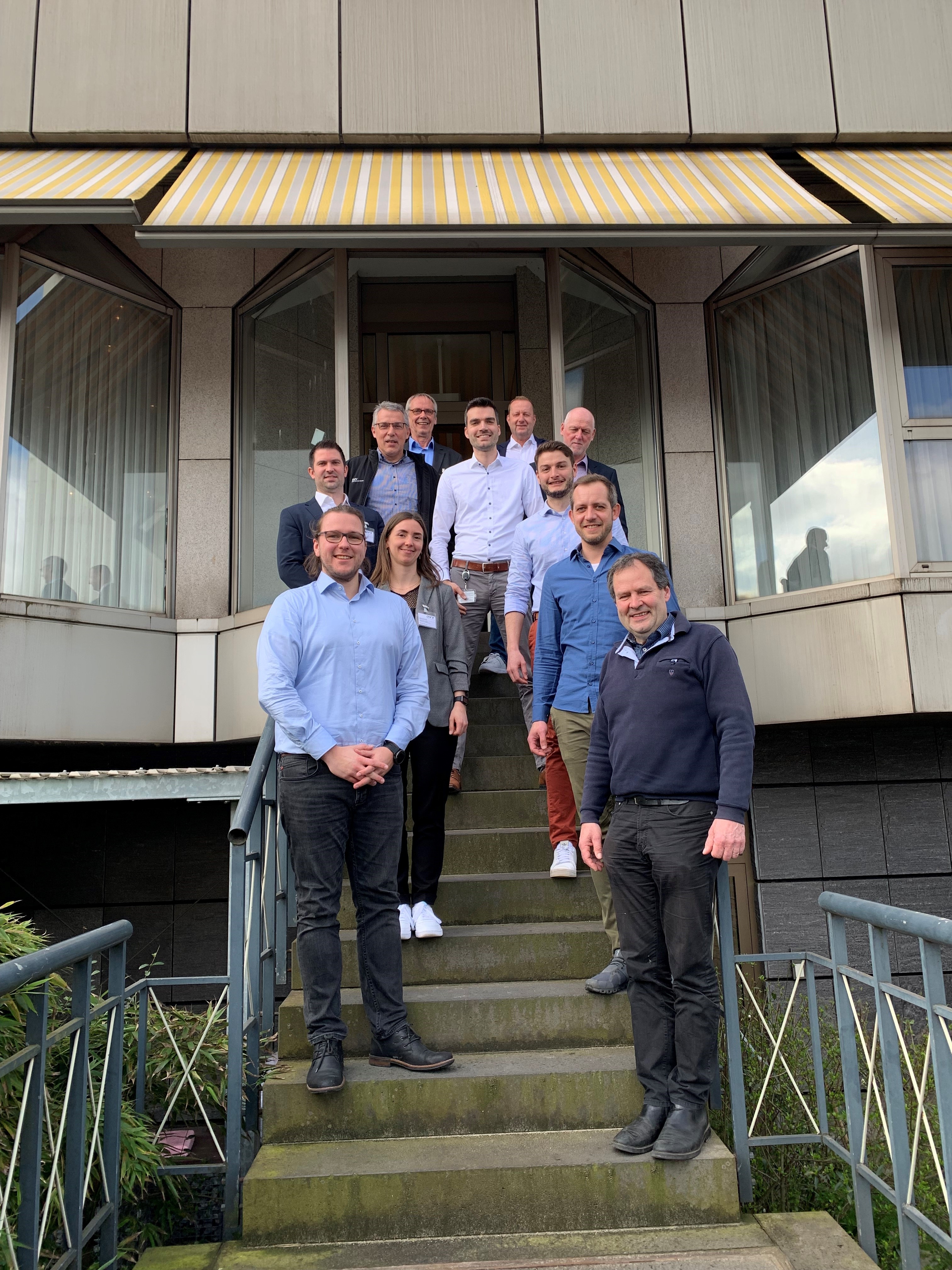
Energy Technology – District Heating - Joana Verheyen

District heating systems (DHS) are a cornerstone of urban energy infrastructure, distributing heat through networks that supply residential, commercial, and industrial buildings. Traditionally these centralized systems are powered by fossil fuels and need to be transformed through the integration of renewable heat suppliers and waste heat. Within the research project TeoS*, we at the Chair of Energy Technology are working with our partners, the district heating network operators BTB GmbH Berlin and Fernwärme Duisburg GmbH, on how such networks can be supplied in the most climate-friendly way possible. First, the project partners' data will be collected and processed in order to develop models for the energy conversion plants, thermal energy storage and distribution grids. Taking into account characteristic meteorological years as well as price and heat demand profiles, the future scenarios are then calculated, checked for plausibility and evaluated from a technical, economic and ecological point of view. The combination of optimized system operation (unit commitment problem) and hydraulic network calculation is an important goal here, as challenges such as lower temperature levels or fluctuating availability arise from the integration of sustainable energy sources such as large heat pumps (river water, waste water, waste heat), deep geothermal energy, industrial waste heat, and solar thermal energy. To reduce the mismatch between availability and demand, both short-term and seasonal thermal energy storage systems are considered. *"Technology-Open Energy System Analysis for the Derivation of Measures for the Decarbonization of Urban Heating Networks" ("Technologieoffene Energiesystemanalyse zur Ableitung von Handlungsmaßnahmen für die Dekarbonisierung urbaner Wärmenetze"), research grant no. 03EI1060A, funded by Germany’s Federal Ministry for Economic Affairs and Climate Action
About the working group:
The Chair of Energy Technology (LET) conducts experimental and simulative research in the field of electrochemical energy converters as well as in the field of rational energy use and energy conversion with a focus on CHP, renewable heat and district heating. Specifically, the design, processes and possible applications of batteries (zinc-polyiodide, nickel-zinc, zinc-manganese, lithium-ion), fuel cells and renewable energy sources (hydrogen, ammonia) are being intensively researched. In the field of rational use of energy, several software tools have been developed for the calculation and evaluation of energy conversion systems (conventional and renewable), thermal energy storage, optimal plant operation and thermo-hydraulic modeling of district heating networks. The work will be further exploited by the affiliated institute that emerged from the chair, the Center for Fuel Cell Technology (ZBT), and the young spin-off Lagom.Energy GmbH.
Q&A
What is your favorite experiment/part of your daily work?
Discussing the energy of the future is a constant reminder of how little we really know - so there is always a lot to learn! And sometimes I completely lose time while programming, which can be very nice when you find your error...
What do you enjoy most about your research in general at the faculty of engineering/or the UDE?
I have the pleasure of getting to know many different people and at the same time developing my research questions in a collegial and interesting working group.
Is there something you are looking for? Like an expert for a specific method, critical feedback or a collaboration partner?
If you have already dealt with multi-criteria optimization in Python/Gurobi, I am very interested, as I would like to apply this to our energy system simulations. Otherwise, I am also happy about other kind exchange.
Contact
Mechanical and Process Engineering
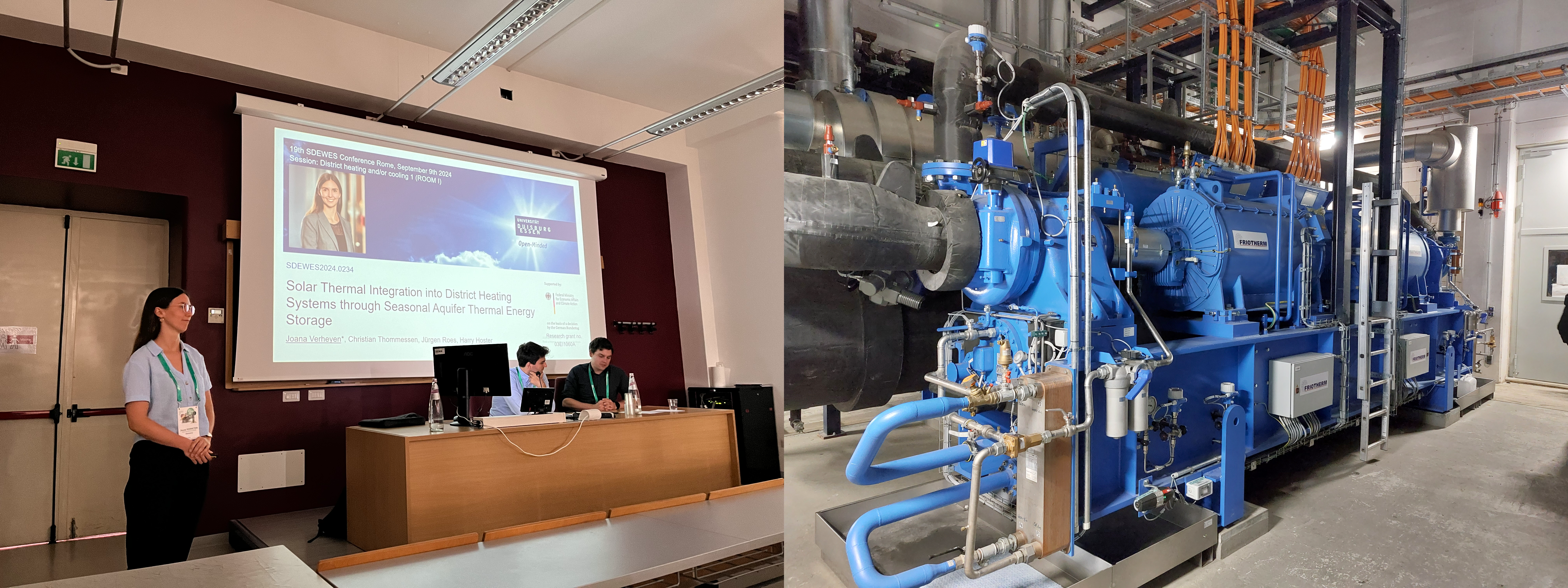

Institute for Sustainable and Autonomous Maritime Systems (INAM) - Multi-scale cavitation
Prof. Bettar O. el Moctar
Institute for Sustainable and Autonomous Maritime Systems (INAM) - Multi-scale cavitation - Prof. Bettar O. el Moctar

Simulation of multi-scale cavitating flows in interaction with structures
Cavitation refers to the pressure-driven growth and collapse of vapour bubbles in a liquid. If the pressure in a flow falls below the saturation vapour pressure, non-condensable gas bubbles growth of non-condensable gas bubbles into cavitation bubbles. If the pressure in the flow increases, these cavitation bubbles collapse and emit pressures in the order of gigapascals. order of magnitude of gigapascals. In most cases, cavitation is an undesirable phenomenon, it plays an important role in many technical areas. In a maritime context, cavitation is known for its erosive effect, induced vibrations and sound radiation. At the Institute for Sustainable and Autonomous Maritime Systems (INAM), cavitating flows are simulated on nanoscale and macroscale. The collapse of nanobubbles in the vicinity of structures is simulated based based on a molecular dynamics model (MD) to simulate the bubble dynamics at the molecular level molecular level, to understand the formation of cavitation nuclei, to investigate the phase change between liquid between liquid and gas and to understand the effect on materials. Meso- and macro-scale flows are simulated based on the solution of Navier-Stokes equations. On the one hand, the liquid and gas phases are modelled as continua. On the other hand we develop multi-scale Euler-Lagrange methods, which allow the simulation of individual, spherical cavitation spherical cavitation bubbles with the simulation of macro-scale technical flows.About the working group:
The Institute of Sustainable and Autonomous Maritime Systems (INAM) has been involved in the development of maritime systems on various scales for decades, both in basic and applied research. The topic of sustainability plays a central role here, as our developments aim to reduce the energy requirements of maritime systems or increase the performance of systems with the same energy requirements. We are also working on a number of projects that deal with the automation of shipping. Research at INAM also focusses on topics relating to the aerodynamics of aircraft. In all our research activities, we endeavour to rapidly transfer our research findings into the training of our students and into the maritime industry.
Contact
Mechanical and Process Engineering

References:
Rezaee, S., Kadivar, E., el Moctar, O. (2024). The role of sawtooth-shaped nano riblets on nanobubble dynamics and collapse-induced erosion near solid boundary. Journal of Molecular Liquids, vol. 405, 2024, 124947
Peters, A., el Moctar, O. (2020). Numerical Assessment of Cavitation-Induced Erosion Using a MultiScale Euler-Lagrange Method Journal of Fluid Mechanics, vol. 894.
Sagar, H.J., Lin, Y., el Moctar, O. (2024). Dynamics of a single cavitation bubble near an oscillating boundary. Scientific Reports 14, 22031 (2024).


